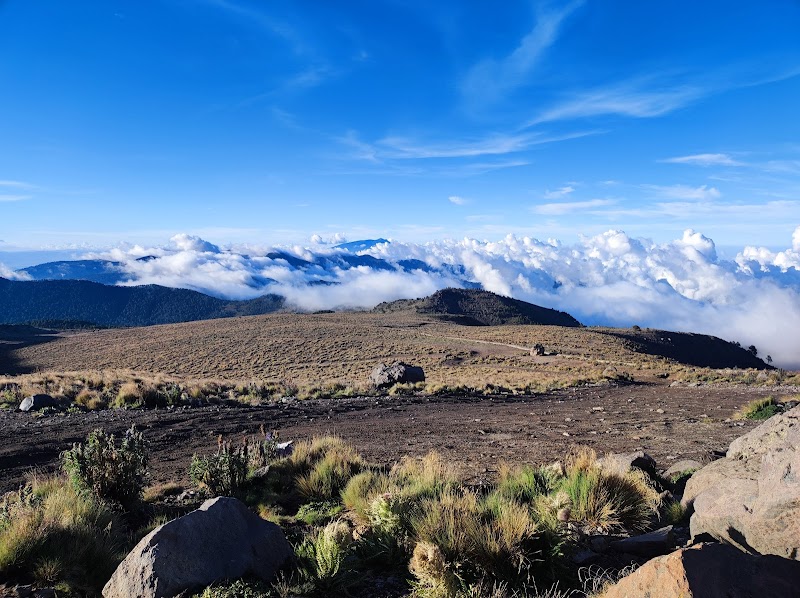
Scaling New Heights: The National Climbing Championship on Pico de Orizaba
Pico de Orizaba’s National Climbing Championship offers climbers the chance to ascend Mexico’s highest peak, presenting a challenging yet accessible adventure through forests, volcanic rock, and glaciers. Discover practical tips and insights to prepare for this rigorous but rewarding climb in Veracruz.
Acclimatize Before the Climb
Spend at least two days at elevation before attempting the summit to adjust to thinner air and reduce risks of altitude sickness.
Hydration Is Non-Negotiable
Carry at least 3 liters of water per person and use electrolyte supplements to keep energy levels stable throughout the climb.
Footwear with Grip and Support
Wear mountaineering boots compatible with crampons to negotiate icy glacier sections safely and maintain ankle stability on rocky terrain.
Start Early for Weather Advantage
Begin your climb before dawn to avoid afternoon storms common in the area, preserving clear skies and safer climbing conditions.
Scaling New Heights: The National Climbing Championship on Pico de Orizaba
Pico de Orizaba, Mexico’s towering giant at 5,636 meters, is more than just a mountain—it’s a test of endurance and determination. Each year, the National Climbing Championship draws climbers here, challenging them to ascend the highest peak in Mexico and third highest in North America. The route starts from the Piedra Grande Hut, at about 4,000 meters, following a 7-kilometer glacier trail that winds through thick forests giving way to rugged volcanic rock and ice fields. The ascent climbs nearly 1,600 vertical meters from the hut to the summit, demanding precision and stamina.
The mountain breathes with a slow heartbeat, the wind pushing and pulling like an unseen competitor. Glaciers dare climbers forward yet remind them that Pico de Orizaba remains fiercely itself—untamed and raw. The trail cuts sharp, sometimes stealing the breath before the next stretch of forested paths offers a quiet reset. As you climb, the panoramic sweep of the Veracruz valleys below spills into view, a clear reminder of the prize earned with each cautious step.
The championship isn’t just about speed—it’s about respect: for the mountain's volatile weather, for the thin air that steals energy, and for the terrain that demands vigilance. Preparation is key. Hydrate rigorously before and during the climb. Choose footwear with sturdy ankle support and crampon compatibility, vital for the icy sections. Start early in the day to avoid afternoon weather shifts and to give your body time to acclimate.
The climb is practical adventure; it’s an immersive challenge with clear demands. The blend of forest trails, volcanic rocks, and glacier fields creates a unique terrain mosaic that tests both physical strength and mental focus. Whether you’re a seasoned mountaineer or a capable hiker, the National Climbing Championship on Pico de Orizaba offers an unparalleled opportunity to engage directly with Mexico's highest peak—far from the crowded trails yet close enough to a welcoming city base. This event connects competitor to mountain, body to earth, effort to reward.
Gear up, respect the mountain’s moods, and prepare to move steadily upward, step by gritty step. Here, climbing is a conversation with Pico de Orizaba itself—an exchange marked by challenge, beauty, and the unwavering demand of a summit that waits for no one.
Nearby Trips
All Adventures
Boat Charters
Water Activities
Adventures near Orizaba, Veracruz
Discover the unique and memorable adventures that make Orizaba, Veracruz special.
Frequently Asked Questions
What permits are required for the National Climbing Championship on Pico de Orizaba?
Participants must secure climbing permits from Mexico’s National Park Service (CONANP) ahead of time. Local organizers usually handle registrations for the championship, but individual climbers should verify permit requirements and fees beforehand.
Are guided climbs necessary for novice climbers?
While not obligatory, guided climbs are highly recommended for those unfamiliar with glaciers and high-altitude conditions to increase safety and success chances.
What wildlife might I encounter during the climb?
Forest sections may host coyotes, white-tailed deer, and various bird species like eagles and hawks. At higher altitudes, wildlife is scarce but occasionally marmots or small rodents can be spotted.
Is there cell phone coverage on the mountain?
Cell phone reception is limited to the lower elevations around Piedra Grande Hut and near Orizaba city. Higher up, expect no service; prepare accordingly for emergencies.
What is the best way to reduce altitude sickness on Pico de Orizaba?
Ascend gradually, hydrate well, avoid alcohol prior to climbing, and consider medications like acetazolamide after consulting a healthcare provider.
Where can spectators best watch the championship without joining the climb?
Orizaba city offers several vantage points and access roads to lower trailheads where spectators can view climbers beginning their ascent and enjoy the festive championship atmosphere.
Recommended Gear
Crampons
Critical for traction on ice and hard snow, especially for icy glacier sections typical of Pico de Orizaba's summit approach.
Mountaineering Boots
Provides ankle support and keeps feet dry and insulated on mixed volcanic terrain and snow.
Insulated Layer
Vital for cold summit conditions to prevent hypothermia and maintain warmth during wind exposure.
Hydration System
Secure hydration during the climb with a reservoir or bottles, necessary to counteract dry air and physical exertion.
Local Insights
Hidden Gems
- "The less traveled Travesía route between Pico de Orizaba and Sierra Negra for panoramic mountain views."
- "The Piedra Grande Hut’s nearby glacial lagoon—a reflective pool that mirrors the summit on calm mornings."
Wildlife
- "The mountain harbors the endangered Mexican pine vole at lower elevations."
- "The crest attracts condors and golden eagles soaring the thermal currents."
History
"Pico de Orizaba served as a navigational landmark during Mexico’s early exploration periods and holds cultural significance in local Nahuatl mythology as a sacred mountain."
